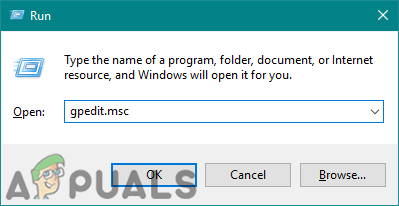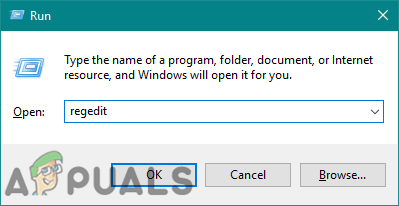How to Customize Settings Page Visibility in Windows 10?
The Settings app in Windows is improving after each Windows update. This will most likely replace the Control Panel completely in the near future. All of the settings are much better categorized in the Settings app. However, as an administrator, you can disable the pages in the Settings from the standard users. There are settings pages that the standard users should not access for different reasons. In this article, we will show you how you can hide or show Settings pages.
We have also included the Registry Editor method because the Group Policy Editor is not available in the Windows Home Editions.

Customizing Settings Page Visibility through the Local Group Policy Editor
The Local Group Policy Editor is a Microsoft Management Control that is used to modify different types of settings for the operating systems. There is a policy setting available for almost all of the settings. The user just needs to open the policy setting and change the toggle option for it. You can set this policy for both machine and the user in the Group Policy Editor. We have provided steps through which you can customize the Settings Page Visibility according to your needs:
Note: If you are using Windows Home Edition, then skip this method and try using the Registry Editor method.
- Hold the Windows key and press the R key to open a Run dialog. Then type “gpedit.msc” and press the Enter key to open the Local Group Policy Editor.
Note: Choose the Yes option for the User Account Control prompt.
Opening Local Group Policy Editor - In the Computer Configuration, navigate to the following policy setting:
Computer Configuration\ Administrative Templates\ Control Panel

Navigating to the policy setting - Double-click on the Settings Page Visibility policy setting. A new window will open, then change the toggle option from Not Configured to Enabled. Type the “showonly:” without quotations and then URI (Uniform Resource Identifier) of the settings page in the box as shown below.
showonly:about;wifi;network-status

Only show the about, wifi, and network status pages - Similarly, users can also write “hide:” without quotations and then URI of the settings pages to hide only those pages and not others. Multiple pages URI can be separated by semicolon in between them.

Hiding pages in the Settings app - After that, click on the Ok/Apply buttons to apply the changes. This will hide and show the pages only the administrator wants them to show.
Customizing Settings Page Visibility through the Registry Editor
If users don’t have the Local Group Policy Editor on their system, they can use the Registry Editor for the same purpose. However, in this method, users will be required to use some technical steps to achieve the same result as GPO. You can set this policy for both machine and the user in the Registry Editor. Users need to create the missing key or value manually in the Registry Editor.
- Press the Windows + R keys together to open a Run dialog. Then type “regedit” and press the Enter key to open Registry Editor. Choose the Yes button for UAC (User Account Control) prompt.

Opening the Registry Editor - In the left pane of Registry Editor, navigate to the following key:
HKEY_LOCAL_MACHINE\Software\Microsoft\Windows\CurrentVersion\Policies\Explorer
- Right-click on the right pane of the Explorer key and choose the New > String option. Name that value as “SettingsPageVisibility“.

Creating new value in Explorer key - Double-click on the value and put the command “showonly:URI” without quotation and the URI of the page. Similarly, you can also type the command “hide:URI” for the page to hide.
Note: Multiple URIs are separated by a semicolon in between them.
Adding value data to newly created value - After that, click on the Ok button to save the changes. Make sure to restart your computer after modifying the Registry Editor.
Additional: List of URI (Uniform Resource Identifier)
We have included the full list of URIs that you can use to customize your Settings Page Visibility. If all of the pages in a category is hidden, then the category will not show in the Settings app.
System
- Display: display
- Notifications & actions: notifications
- Power & sleep: powersleep
- Battery: batterysaver
- Battery > Battery usage by app: batterysaver-usagedetails
- Storage: storagesense
- Tablet mode: tabletmode
- Multitasking: multitasking
- Projecting to this PC: project
- Shared Experiences: crossdevice
- About: about
Devices
- Bluetooth & other devices: bluetooth
- Printers & scanners: printers
- Mouse: mousetouchpad
- Touchpad: devices-touchpad
- Typing: typing
- Pen & Windows Ink: pen
- AutoPlay: autoplay
- USB: usb
Network & Internet
- Status: network-status
- Cellular & SIM: network-cellular
- Wi-Fi: network-wifi
- Wi-Fi > Manage known networks: network-wifisettings
- Ethernet: network-ethernet
- Dial-up: network-dialup
- VPN: network-vpn
- Airplane mode: network-airplanemode
- Mobile hotspot: network-mobilehotspot
- Data usage: datausage
- Proxy: network-proxy
Personalization
- Background: personalization-background
- Colors: colors
- Lock screen: lockscreen
- Themes: themes
- Start: personalization-start
- Taskbar: taskbar
Apps
- Apps & features: appsfeatures
- Apps & features > Manage optional features: optionalfeatures
- Default apps: defaultapps
- Offline maps: maps
- Apps for websites: appsforwebsites
Accounts
- Your info: yourinfo
- Email & app accounts: emailandaccounts
- Sign-in options: signinoptions
- Access work or school: workplace
- Family & other people: otherusers
- Sync your settings: sync
Time & language
- Date & time: dateandtime
- Region & language: regionlanguage
- Speech: speech
Gaming
- Game bar: gaming-gamebar
- Game DVR: gaming-gamedvr
- Broadcasting: gaming-broadcasting
- Game Mode: gaming-gamemode
Ease of Access
- Narrator: easeofaccess-narrator
- Magnifier: easeofaccess-magnifier
- High contrast: easeofaccess-highcontrast
- Closed captions: easeofaccess-closedcaptioning
- Keyboard: easeofaccess-keyboard
- Mouse: easeofaccess-mouse
- Other options: easeofaccess-otheroptions
Privacy
- General: privacy
- Location: privacy-location
- Camera: privacy-webcam
- Microphone: privacy-microphone
- Notifications: privacy-notifications
- Speech, inking, & typing: privacy-speechtyping
- Account info: privacy-accountinfo
- Contacts: privacy-contacts
- Calendar: privacy-calandar
- Call History: privacy-callhistory
- Email: privacy-email
- Tasks: privacy-tasks
- Messaging: privacy-messaging
- Radios: privacy-radios
- Other devices: privacy-customdevices
- Feedback & diagnostics: privacy-feedback
- Background apps: privacy-backgroundapps
- App diagnostics: privacy-appdiagnostics
Update & Security
- Windows Update: windowsupdate
- Windows Update > Check for updates: windowsupdate-action
- Windows Update > Update history: windowsupdate-history
- Windows Update > Restart options: windowsupdate-restartoptions
- Windows Update > Advanced options: windowsupdate-options
- Windows Defender: windowsdefender
- Backup: backup
- Troubleshoot: troubleshoot
- Recovery: recovery
- Activation: activation
- Find My Device: findmydevice
- For developers: developers
- Windows Insider Program: windowsinsider
Mixed Reality
- Mixed reality: holographic
- Audio and speech: holographic-audio





